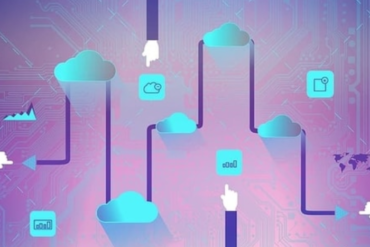In the rapidly evolving landscape of cloud computing, serverless computing has emerged as a transformative paradigm, redefining the way businesses design, deploy, and manage applications. For organizations embarking on cloud migration services, understanding the concepts and implications of serverless computing is essential. In this article, we will explore what serverless computing is, its benefits and challenges, and how it integrates into cloud migration strategies, equipping you with the knowledge you need to harness the power of serverless in your cloud endeavors.
What is Serverless Computing?
- A Paradigm Shift: Serverless computing represents a shift from traditional server-centric models to an event-driven, function-as-a-service approach.
- No Server Management: In serverless computing, organizations do not manage servers directly. Instead, cloud providers handle infrastructure provisioning and scaling automatically.
- Pay-as-You-Go: Serverless follows a pay-as-you-go model, where organizations are charged only for the compute resources used during the execution of functions or applications.
- Benefits of Serverless Computing
- Cost Efficiency: Serverless eliminates the need to pay for idle server capacity, making it cost-effective for organizations with varying workloads.
- Scalability: Serverless platforms automatically scale resources to accommodate changes in traffic, ensuring optimal performance under varying workloads.
- Reduced Operational Overhead: Organizations can offload server management, patching, and infrastructure maintenance to cloud providers, reducing operational burdens.
- Rapid Development: Serverless enables rapid application development, as developers can focus on writing code and defining functions rather than managing infrastructure.
- Event-Driven Architecture: Serverless encourages event-driven architecture, allowing applications to respond dynamically to events, such as user interactions or system triggers.
Visit here for: Cloud Engineering Services
Challenges of Serverless Computing
- Vendor Lock-In: Serverless offerings are often tightly integrated with specific cloud providers, potentially leading to vendor lock-in.
- Cold Starts: Serverless functions may experience latency during initial invocation (cold start) as the cloud provider provisions resources.
- Resource Limits: Serverless platforms impose resource limits, such as execution time and memory, which may affect the suitability of certain workloads.
- State Management: Serverless functions are stateless by design, making it challenging to manage and share data between functions.
- Monitoring and Debugging: Monitoring and debugging serverless applications can be complex, as traditional debugging tools may not apply.
- Serverless in Cloud Migration
- Incorporating Serverless into Migration Strategies:
- Organizations can integrate serverless computing into their cloud migration strategies to modernize applications and achieve greater agility.
- Refactoring and Re-architecting:
- Existing applications can be refactored or re-architected to leverage serverless components, such as AWS Lambda or Azure Functions.
- Hybrid Architectures:
- Organizations may choose hybrid architectures that combine serverless components with traditional infrastructure to meet specific requirements.
- Microservices:
- Serverless is well-suited for microservices architecture, allowing organizations to build, deploy, and manage individual functions independently.
Best Practices for Serverless Cloud Migration
- Assessment and Planning:
- Evaluate the suitability of workloads for serverless adoption based on factors like execution time, resource requirements, and event-driven nature.
- Security:
- Implement robust security practices, including role-based access control and encryption, to protect serverless functions and data.
- Resource Management:
- Set resource limits appropriately for serverless functions to optimize cost and performance.
- State Management:
- Choose the appropriate state management mechanisms, such as serverless databases or cache services, to handle data persistence.
- Monitoring and Logging:
- Leverage cloud-native monitoring and logging services to gain visibility into serverless functions’ performance and troubleshoot issues.
Real-World Use Cases of Serverless in Cloud Migration
- Retail and E-commerce:
- Retailers utilize serverless for handling burst traffic during sales events, inventory management, and customer support chatbots.
- Media and Entertainment:
- Media companies leverage serverless to process and transcode media files, analyze viewer data, and deliver content efficiently.
- IoT and Edge Computing:
- IoT applications benefit from serverless to process and analyze sensor data, trigger actions, and respond to device events.
- Data Processing and Analytics:
- Organizations use serverless for data processing, ETL (Extract, Transform, Load), and real-time analytics, enabling cost-effective and scalable data workflows.
Conclusion
Serverless computing is reshaping the cloud landscape by offering organizations unprecedented agility, scalability, and cost-efficiency. As businesses embark on cloud migration journeys, understanding the potential of serverless computing is crucial. By incorporating serverless principles and best practices into migration strategies, organizations can modernize their applications, respond dynamically to events, and achieve greater innovation. While challenges such as vendor lock-in and cold starts exist, the benefits of serverless computing make it a powerful addition to cloud migration efforts, enabling organizations to thrive in a digital-first world.





